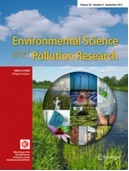The ChimERA project: coupling mechanistic exposure and effect models into an integrated platform for ecological risk assessment

Typically, environmental exposure and the expected ecological effects are assessed separately. Yet for the last 25 years, the environmental realism, the ecological relevance, and the methodological accuracy of these official procedures have been questioned. Bearing in mind the ecological and environmental complexity inherent to natural ecosystems, risk assessors increasingly realise that ecological risk cannot be adequately assessed while disregarding most, if not all, of this complexity. Exposure to chemicals is not constant in time nor is it homogeneously distributed in space. This may allow for recovery-inducing processes at the individual, population, and community level. In addition, real ecosystems may be faced with the combined effects of multiple stressors. Moreover, this approach neglects that functional redundancy may compensate species loss and sustain functions in stressed ecosystems. Experimentally examining the effects of multiple stressors at higher levels of biological organisation from multiple exposure scenarios in various geographical areas is an informative exercise but cannot be considered as a standard approach for ERA. Instead, new models are needed which can be extrapolated to many different alternative scenarios. In this paper, we outline the methodology and objectives of a new project which will answer this need.